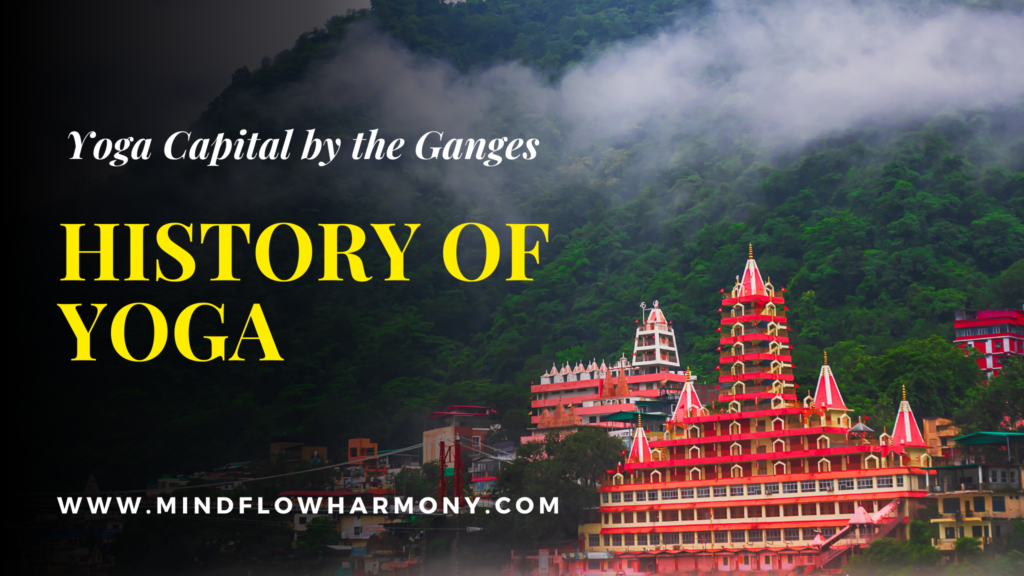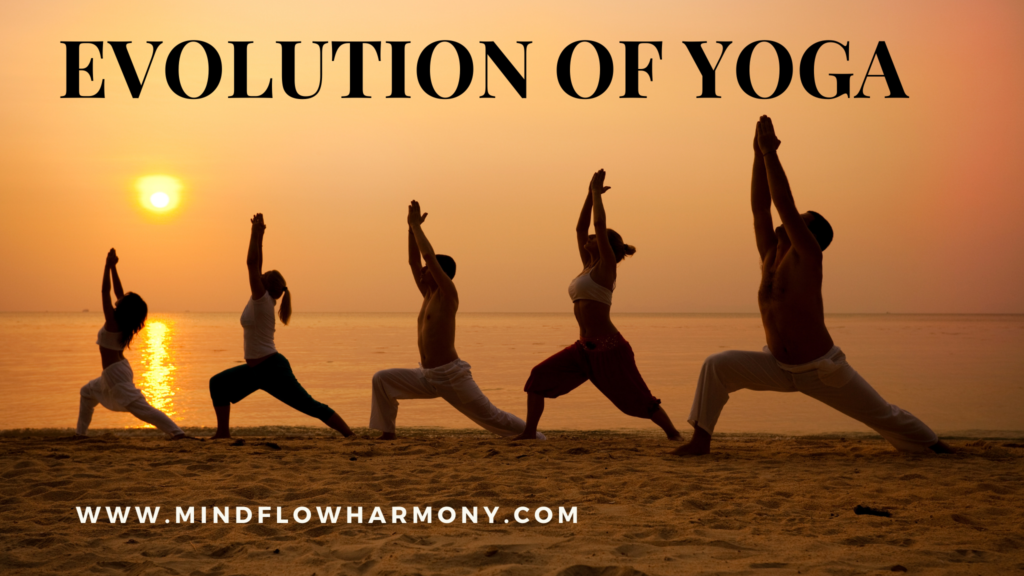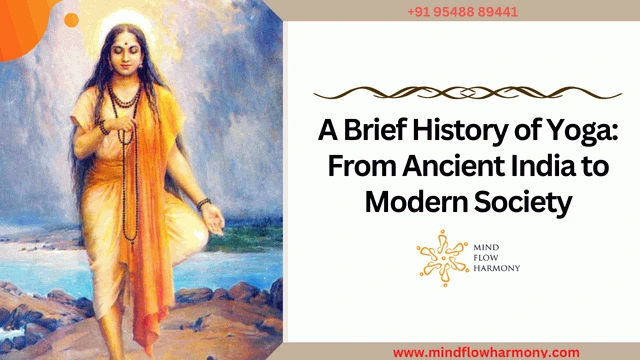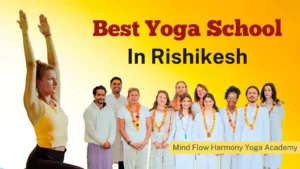Yoga originated in India more than 5000 years in the past. It is an old practice that intends to offer balance to the body, mind, and spirit. The beginnings of yoga may be observed in the Vedic period in India around 1500 BCE. Back then, yoga turned into particularly used as a religious practice and was nearly related to Hinduism and Buddhism.
In the 1800s, Indian monks and instructors added yoga to the Western global. They taught different kinds of poses, breathing methods, and meditation practices which many people adopted and modified to match their needs. By the middle of the 1900s, yoga grew to be very popular in the West.

Yoga has long records spanning thousands of years, however it has become a worldwide phenomenon these days. Starting from its origins in historical India, yoga has developed and tailored through the years which results in its widespread practice around the world. Let us explore how this ancient practice has become so popular across the world.
Today, yoga is popular worldwide for workouts and relaxation. It is found as a way to stay physically healthy and calm the mind. People use yoga to help with many health problems, each physical and mental. Over time, various kinds of yoga like Hatha and Raja yoga evolved based on teachings from distinct yogic texts.
Table of Contents
Ancient Beginnings of Yoga
Yoga has been practiced for thousands of years and started in historical India. To actually recognize yoga and its focus on ordinary health and wellbeing, it is quite important to examine its original philosophical and spiritual roots. Exploring these origins enables us to grasp the history of yoga better.
To understand yoga deeply, one can study ancient spiritual texts, learn about its eight limbs, and understand its basic principles and teachings. This knowledge helps people appreciate yoga more and benefit fully from its transformative effects.
Yoga’s history is going back to about 3000 BCE. Over time, different kinds of yoga emerged, every with its personal beliefs, texts, and techniques. The Sankhya, Vedanta, and Patanjali systems are quite famous and shape the base of yoga in India.
The Rig Veda which is dating to approximately 1500 BCE includes the earliest recognized yoga which makes it certainly one of Hinduism’s oldest scriptures. The Upanishads believed to be written between the 8th and 4th centuries BCE also talk about meditation and breathing exercises. Additionally, the Mahabharata, an epic poem from around 400 BCE, references yoga. These texts describe yoga as a spiritual practice that enhances self-awareness, inner peace, and connection with the divine.

In the classical period, crucial yoga texts had been written. The Yoga Sutras by Patanjali from around the 2nd century BCE and the Hatha Yoga Pradipika from across the fifteenth century CE are such texts. They describe ancient yoga practices and thoughts and are still studied and used by many yoga practitioners these days.
Studying Patanjali’s Yoga Sutras’ can help us perceive how yoga has stimulated many techniques like Hatha and Ashtanga. This exploration shows how yoga’s ancient roots have formed our modern understanding of its physical and mental gains. Understanding yoga’s records is crucial to grasp its many types and broader impact.
Patanjali’s Yoga Sutras are seen as the base for lots of popular styles consisting of Hatha and Ashtanga. They are important for understanding the physical and mental benefits that yoga offers which shape how we see yoga today. These practices aim to make practitioners more aware of their body, mind, and spirit.
Ancient yogis valued both the physical and mental sides of yoga. They focused on poses, breathing, and meditation. These practices have evolved over time which led to modern yoga and also blends physical, emotional, and spiritual elements into a complex science.
Also Read: 500 Hour Yoga Teacher Training in Rishikesh: “Intensive and Comprehensive yoga Program”
Evolution of Yoga around the World
Yoga originated in ancient India and has been practiced for centuries. Today, it has spread to many parts of the globe. Despite its popularity, many people do not know its historical records and standards properly. This lack of knowledge can keep them away from fully experiencing the deep connection and advantages that yoga gives.
Understanding yoga’s history helps practitioners tap into its wealthy heritage and fully enjoy its strength and style. Exploring yoga’s past shows how distinct patterns evolved which gives access to physical benefits and spiritual insights of those historical practices.

To see why yoga is so famous worldwide, we want to take a look at its path from India to Europe and North America within the 19th century, and then to other nations in the 20th and 21st centuries.
Yoga has always been influential which helping ancient people stay healthy and balanced. Today, it is used to control stress, find balance, and become more mindful. It is likewise a popular exercise for all, no matter their age or health level.
Yoga has been shaped by many cultures like Hinduism and Buddhism. It has evolved into different types together with Hatha and Ashtanga which emphasize poses and breathing. Modern yoga also includes mindfulness and meditation which can reduce stress and improve wellbeing.
Also Read: Best Yoga Teacher Training For Beginners In India
Find the Different Styles of Yoga
Learning about the various types of yoga can help you select the right one for you and make your practice more powerful. Understanding the history of different patterns from traditional to trendy is critical for making an informed decision. This way, you could pick out a style that fits your desires and dreams which ensures you get the most out of your practice.
In the late 19th and early 20th centuries, yoga started becoming famous out of India and spread to the Western part. Indian gurus and yogis traveled abroad to share their yoga teachings and practices with folks to the West.
In the 1960s and 70s, lots of folks in the United States and Europe commenced doing yoga more and more. It has become quite a popular method to exercise and relax. Nowadays, yoga is much more popular and you could find training nearly anywhere like in gyms and community centers across the world.
Long ago in historical India, there were four types of yoga: Raja, Hatha, Karma, and Jnana. They all commenced round 5000 years in the past and got here from Hindu teachings. Raja yoga is all about meditation, Hatha yoga specializes in bodily poses, Karma yoga is helping others selflessly, and Jnana yoga is to gain expertise.

Even though the four original yoga patterns have their personal strategies, they all focus on the same aspect which is accomplishing self-enlightenment. Nowadays, because of extra connections among countries, new kinds of yoga have popped up like Bikram, Ashtanga, Iyengar, and Vinyasa. Some of these new styles do not stick strictly to the old ways from ancient India, but many still many use them as a foundation of their teachings. This shows that yoga comes from a long and interesting history, whether old-fashioned or modern.
Hatha Yoga is nothing but doing physical poses (called asanas) and unique breathing techniques (pranayama). But, Karma Yoga is good deeds and supporting others in a way to connect spiritually. Yoga has been around for a certainly long period and comes from historical writings of Hinduism, Buddhism, and Jainism. These writings speak about specific kinds of yoga like Raja, Bhakti, and Jnana Yoga. Hatha Yoga which started in the fifteenth century mixes up ideas from all these types.
In the 20th century, Hatha Yoga became more famous because of teachers like Sri Krishnamacharya and Swami Sivananda Radha. Nowadays, folks that do yoga regularly mix Hatha with different styles like Vinyasa Flow or Iyengar. This makes their own special way of doing yoga using both old and new ideas.
Jnana Yoga helps people tap into their internal understanding through studying scriptures, thinking deeply, and asking themselves queries to get the authentic nature of truth. It is a unique way to connect with the divine by following teachings from Hindu scripture. This practice is going way back to historic times and is still a huge part of yoga these days. By analyzing and asking questions, Jnana Yoga helps people recognize themselves and the whole world better. That is why it has been important in yoga for thousands of years.
Different types of yoga give us many mental benefits too. Kundalini yoga helps in waking up the body’s inner energy whilst Ashtanga yoga is good for clearing the mind. There are also styles like Hatha, Viniyoga, Iyengar, and Bikram. Each one has its own benefits and ties again to yoga’s history. When we do traditional yoga, it is like taking a break to think about how yoga has changed over time. It connects us to the teachings of wise people from long ago. Trying out different yoga styles helps us see all the different ways people have been doing yoga for ages.
Also Read: Best Yoga School in Rishikesh: Perfect Place for Yoga in Rishikesh
Yoga in Modern Society

Yoga has been practiced by folks for a long time and has a huge effect on today’s lifestyles. It is not popular in gyms but it also in hospitals, schools, and offices. Many people do yoga to enhance their physical, emotional, and mental health.
Yoga is keep on evolving, but it has become an important part of many people’s lives. Whether they do it for spiritual, mental, or physical reasons, yoga is now a huge part of many cultures and societies.
Yoga started out in India long ago as a method to connect the mind and body. It includes exercises for both. Now, yoga has evolved and may be done by anyone, regardless of their experience or physical abilities.
Yoga has developed a lot. It is now a popular way to meditate and exercise. It helps improve both physical and mental health and may even make thinking better. That is why yoga is very popular now, and anyone with different ages or backgrounds can do it.
Yoga’s history is clear from how widely it is used worldwide. It commenced in India but is now popular in Western nations too as it is found in gyms and yoga studios. People love yoga because it is quite beneficial. It is a great part of many people’s lives with millions doing yoga regularly.
Yoga is also a large part of society and affects many areas. It is used now not just for health but also for mental fitness. People use yoga to be healthier and experience better, and it helps lower strain and anxiety. More and more folks are doing yoga even on holiday, at work, or in hospitals.
Also Read: Transform Your Practice and Career with Yoga Teacher Training in Rishikesh
Conclusion about History of Yoga
Understanding the history of yoga allows you to respect this historic practice and its worldwide popularity. Yoga began humbly in India and has been followed by diverse cultures and religions all over the world. It has delivered people of various backgrounds together by offering peace, stability, community, and well being.
There are different types of yoga. Each with its own special benefits. Whether you need to get more flexible, be extra mindful, find more balance, or just relax, there may be a yoga style for you. So, get ready to find the one that fits you properly and gives you happiness in all of the awesome things yoga brings to you.
FAQ about the History Of Yoga
Q. What is the origin of yoga?
Ans. Yoga started in India more than 2,000 years ago in the form of meditation practice, today, it is practiced all over the world to enhance energy, concentration, and well being. There are diverse ranges of yoga with each made to help people fulfill certain goals.
Q. When did yoga start in India?
Ans. Yoga started out a long time ago in the course of the Vedic duration. It all started in the sixth century BC when a wise person namely Patanjali wrote down the fundamentals of yoga in his splendid book called Yoga Sutras.
Q. How has yoga evolved over time?
Ans. Yoga has become famous especially when it is implemented to the West in the year 1960s. Nowadays, various types of yoga are there. But most of the classes mainly give attention to the physical advantages of doing yoga.
Q. What are the historical roots of yoga?
Ans. Yoga’s roots are over 5,000 years back in ancient India. It commenced as a way to connect spiritually, around the 2nd century BCE, a smart individual named Patanjali wrote down the basics of yoga which we still follow today from the book of the Yoga Sutras. From there, a lot of different forms of yoga have taken place like Hatha Yoga, Ashtanga Vinyasa Flow, and Kundalini.
Q. What is the historical significance of yoga?
Ans. Yoga has been there for a very long time going back lots of years. It started in India and was used as a method to bring balance to body, mind, and spirit. The great thing about yoga is how it helps you connect your bodies with your minds and spirits using distinct poses called “asanas”. They have been designed to meet your needs.
Q. What are the different styles of yoga?
Ans. Various kinds of yoga are there that you can try which are as follows:
1. Hatha yoga (gentle one and focuses on poses and breathing to help you relax).
2. Vinyasa flow ( have to move smoothly between poses).
3. Bikram or hot yoga (you do poses in a humid room).
4. Power or Ashtanga yoga (this style builds strength and flexibility with fast paced poses).
5. Restorative classes (deep relaxation is done in these classes using props like blankets and blocks).
6. Kundalini (this is a combo of meditation, chanting, and breathing exercises).
7. Iyengar (has to be precise with your poses using props like straps or chairs).
Q. What is the history of yoga in the West?
Ans. Yoga has been there in the East long time ago, but it did no longer seize within the West until the late 19th century. The first man or woman known to exercise yoga within the West was an Indian guru named Swami Vivekananda. He went to America and Europe in 1893 and introduced a kind of yoga called Hatha Yoga that is all about poses and breathing exercises.
Q. Who first invented yoga?
Ans. Yoga was not invented by one individual itself. It grew over a long time with a lot of people and unique traditions. The first time we hear about yoga is in a Hindu holy book referred to as the Rigveda that is truly old from round 1500 BCE. Most folks think yoga was evolved by the historical Indus Valley Civilization in India.
Q. What was the original purpose of yoga?
Ans. Yoga began a long time ago in historic India related to Hinduism or Buddhism. At first, it was to find spiritual enlightenment through meditation and self discipline.
Q. When was yoga founded?
Ans. Sage Maharshi Patanjali is credited with founding classical Raja Yoga over 2000 years ago; he is sometimes referred to as ‘the father’ or ‘founder ‘of all yogic traditions due his seminal work – The Yoga sutras – written around 400 BCE.
Q. Who is the first yoga guru?
Ans. The first yoga trainer is said to be Sage Maharshi Patanjali. People call him “the father” or “founder” of all yoga as he wrote the book referred to as The Yoga Sutras around 400 BCE, and it is popular in yoga nowadays.
Q. Who is the birthplace of yoga?
Ans. The birthplace of yoga is believed to be ancient India, where it originated over 5,000 years ago.
Q. What is the basic concept of yoga?
Ans. The basic concept of yoga is to unite the mind, body, and spirit through physical postures, breathing exercises, and meditation, with the ultimate goal of achieving inner peace, happiness, and spiritual enlightenment. It emphasizes self-awareness, mindfulness, and the practice of non-violence, truthfulness, and compassion towards oneself and others.
Q. What are the 8 elements of yoga?
Ans. The 8 elements of yoga are-
· Asana (yoga poses),
· Pranayama (breathing exercises),
· Dhyana (meditation and mindfulness practices),
· Yama’s and niyama’s (ethical guidelines for living a yogic lifestyle),
· Pratyahara (withdrawal from the senses to focus on inner awareness),
· Dharana(concentration techniques) ,
· Samadhi (the state of blissful enlightenment).
Q. How many types of yoga are there?
Ans. There are many different types of yoga, such as Hatha, Vinyasa, Ashtanga, Yin Yoga
Q. What are the 3 pillars of yoga?
Ans. The three pillars that form the foundation for any type of yoga practice include-
· Ahimsa or non-harming
· Satya or truthfulness and
· Asteya or non-stealing.
Q. What are the 4 pillars of yoga?
Ans. The four pillars of yoga are known as the four paths of yoga, which include-
· Karma Yoga (focuses on selfless service or action with no thought about reward or recognition;
· Bhakti Yoga (emphasizes devotion to God and surrendering our ego so that one can experience unconditional love from within ourselves towards all beings),
· Raja Yoga (self-realization which leads one closer towards spiritual liberation from suffering caused by ignorance regarding our true nature) and
· Jnana Yoga (this path helps practitioners understand their place within the universe better so they can make choices based upon conscious awareness rather than instinctual reactions born out fear/desire complexes rooted in past conditioning .)
These paths were developed by Patanjali in his book ‘Yoga Sutras’, written around 2nd century BCE. The purpose of these four principles is to provide guidance for yogis on how to reach their highest potential and live a life full of joy and contentment.
Q. What are the 4 principles of yoga?
Ans. The four principles of yoga are:
· Asana: Proper Exercise to keep the body healthy and strong.
· Pranayama: Proper breathing to regulate internal energy.
· Savasana: Relaxation techniques to reduce stress and tension.
· Dhyana: Positive Thinking and Meditation for mental clarity.
Q. Who is known as mother of yoga?
Ans. Mothers of Yoga’s are considered an important part of India’s spiritual heritage since ancient times – Uma Devi Maheshwari being among them credited for her teachings related mainly focused around Tantra practices like Kundalini Awakening, Chakra Balancing etc. She was believed to possess supernatural powers due imparting knowledge about esoteric aspects associated with various forms Indian spirituality.
Q. Who made yoga famous?
Ans. The history of yoga is tightly intertwined with the culture and traditions of India. Yoga has been practiced in India for thousands of years, but it was not until recently that it gained international recognition. One person who made a significant contribution to making yoga famous in India is Tirumalai Krishnamacharya. He was an Indian yogi and scholar from Mysore, Karnataka who lived from 1888-1989 and dedicated his life to promoting the practice of yoga throughout his homeland.
Q. Who made yoga famous in India?
Ans. Swami Vivekananda is credited with popularizing yoga in India and introducing it to the Western world. He was a disciple of the Indian mystic Ramakrishna and travelled to the United States in 1893 to participate in the World Parliament of Religions, where he gave a series of lectures on yoga and Vedanta philosophy. His teachings helped to establish yoga as a spiritual and physical practice in both India and the West.
Follow Us On
Facebook: Mind Flow Harmony
Instagram: mind_flowharmonyacademy








